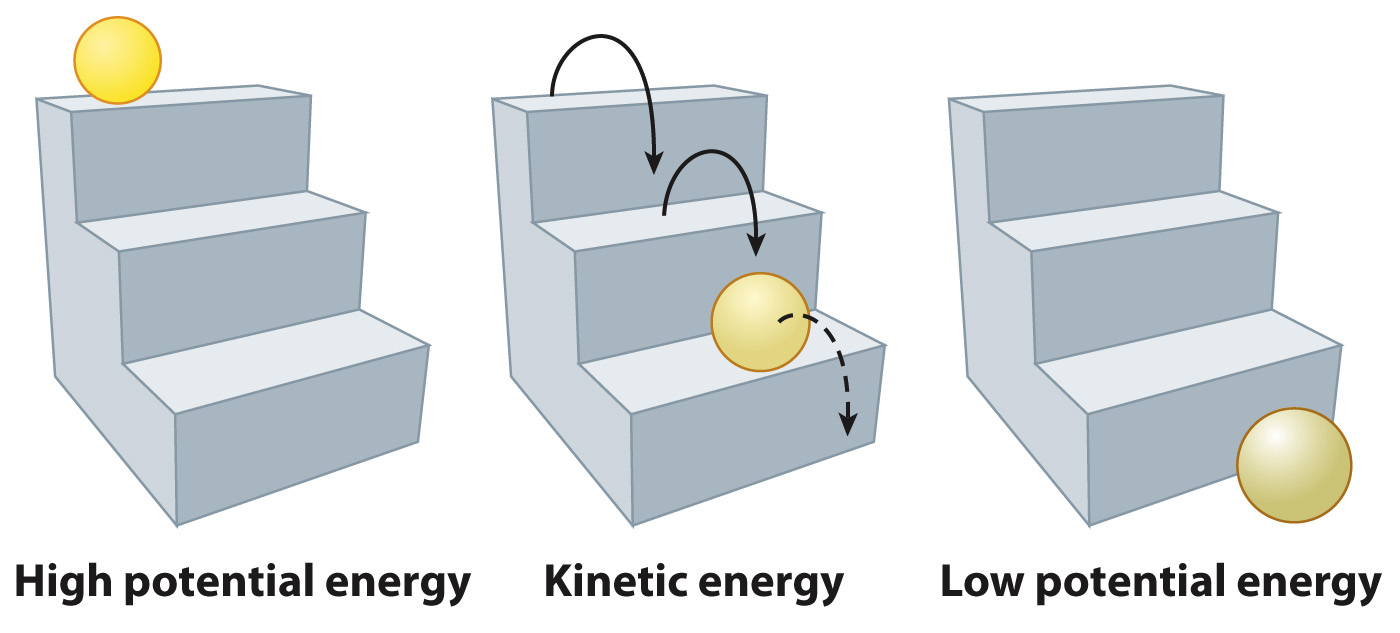Kinetic energy and potential energy are two forms of energy.
Energy can be classified as one of two forms: kinetic energy or potential energy (Fig. 6.3). Kinetic energy is the energy of motion, and it is perhaps the most familiar form of energy. A moving object, such as a ball bouncing down a set of stairs, possesses kinetic energy. Kinetic energy is associated with any kind of movement, such as a person running or a muscle contracting. Similarly, light is associated with the movement of photons, electricity with the movement of electrons, and thermal energy (perceived as heat) with the movement of molecules, so these, too, are forms of kinetic energy.

Energy is not always associated with motion. An immobile object can still possess a form of energy called potential energy, or stored energy. Potential energy depends on the structure of the object or its position relative to its surroundings, and it is released by a change in the object’s structure or position. For example, the potential energy of a ball is higher at the top of a flight of stairs than at the bottom (Fig. 6.3). If it were not blocked by the floor, it would move from the position of higher potential energy (the top of the stairs) to the position of lower potential energy (the bottom of the stairs) because of the force of gravity. Similarly, an electrochemical gradient of molecules across a cell membrane is a form of potential energy. Given a pathway through the membrane, the molecules move down their concentration and electrical gradients from higher to lower potential energy (Chapter 5).
Energy can be converted from one form to another. The ball at the top of the stairs has a certain amount of potential energy because of its position. As it rolls down the stairs, this potential energy is converted to kinetic energy associated with movement of the ball and the surrounding air. When the ball reaches the bottom of the stairs, the remaining energy is stored as potential energy. Conversely, it takes an input of energy to move the ball back to the top of the stairs, and this input of energy is stored as potential energy.